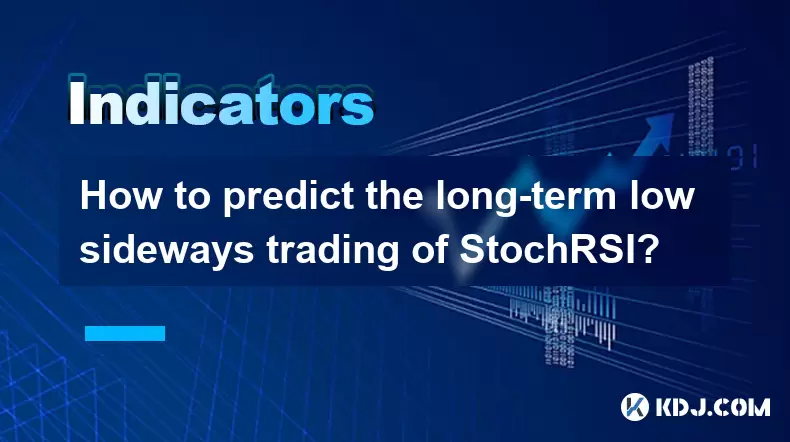-
 Bitcoin
Bitcoin $111,086.9550
2.44% -
 Ethereum
Ethereum $2,774.8994
6.83% -
 Tether USDt
Tether USDt $1.0004
0.02% -
 XRP
XRP $2.4258
5.35% -
 BNB
BNB $670.6634
1.37% -
 Solana
Solana $157.6002
4.09% -
 USDC
USDC $1.0001
0.01% -
 TRON
TRON $0.2912
1.22% -
 Dogecoin
Dogecoin $0.1803
5.73% -
 Cardano
Cardano $0.6221
6.38% -
 Hyperliquid
Hyperliquid $41.5127
6.88% -
 Sui
Sui $3.1089
7.53% -
 Bitcoin Cash
Bitcoin Cash $511.0831
0.69% -
 Chainlink
Chainlink $14.3432
3.55% -
 Stellar
Stellar $0.2921
12.24% -
 UNUS SED LEO
UNUS SED LEO $8.9834
-1.64% -
 Avalanche
Avalanche $19.5059
7.60% -
 Shiba Inu
Shiba Inu $0.0...01248
5.62% -
 Hedera
Hedera $0.1734
8.28% -
 Toncoin
Toncoin $2.8658
2.18% -
 Litecoin
Litecoin $90.9479
3.84% -
 Monero
Monero $327.6526
3.80% -
 Polkadot
Polkadot $3.6393
6.36% -
 Dai
Dai $1.0002
0.01% -
 Ethena USDe
Ethena USDe $1.0010
0.04% -
 Bitget Token
Bitget Token $4.4460
3.42% -
 Uniswap
Uniswap $8.1872
8.10% -
 Pepe
Pepe $0.0...01103
9.83% -
 Aave
Aave $298.9332
2.79% -
 Pi
Pi $0.4698
1.91%
How to predict the long-term low sideways trading of StochRSI?
2025/07/09 19:00

What Is StochRSI and Why Does It Matter?
StochRSI, short for Stochastic RSI, is a momentum oscillator used in technical analysis to identify overbought or oversold conditions in an asset. It combines two popular indicators: the Relative Strength Index (RSI) and the Stochastic Oscillator. In the cryptocurrency market, where price volatility is high, understanding how StochRSI behaves becomes crucial.
When applied correctly, StochRSI helps traders anticipate potential trend reversals by analyzing when an asset may be overbought (typically above 0.8) or oversold (below 0.2). However, during prolonged sideways or range-bound markets, StochRSI can oscillate repeatedly within these zones without clear directional movement, making it challenging to predict long-term lows accurately.
Identifying Long-Term Low Sideways Trading Patterns
To predict long-term low sideways trading using StochRSI, one must first understand what constitutes a "low sideways" phase. This occurs when an asset's price consolidates within a narrow range over an extended period, showing minimal upward or downward bias. During this time:
- StochRSI often fluctuates between 0.2 and 0.8 without breaking out decisively
- There are frequent false signals due to repeated overbought/oversold readings
- Volume tends to decrease significantly, indicating a lack of conviction from buyers or sellers
In such scenarios, relying solely on StochRSI crossovers or threshold breaches can lead to misleading signals. Traders should instead look for confluence with other tools like moving averages, support/resistance levels, and volume patterns to filter out noise.
Combining StochRSI with Other Indicators for Better Accuracy
Using StochRSI alone may not be sufficient to confirm long-term lows in sideways trading environments. A more robust approach involves combining it with complementary indicators:
- Moving Averages (MA): When the price consolidates near key MAs (e.g., 50-day or 200-day), and StochRSI shows bullish divergence, it could signal a potential breakout.
- Bollinger Bands: If the price is hugging the lower band while StochRSI begins to rise from oversold territory, it might indicate a reversal is imminent.
- Volume Analysis: A surge in volume during a StochRSI bounce from oversold levels can validate a genuine shift in sentiment rather than a false rally.
By integrating these tools, traders can filter out misleading StochRSI signals and better identify when a long-term low may be forming in a sideways market.
Recognizing Divergence as a Key Signal
One of the most reliable ways to interpret StochRSI in sideways trading phases is through divergence analysis. Divergence occurs when the price makes a new high or low, but the indicator does not confirm it. For example:
- Bullish Divergence: Price makes a lower low, but StochRSI makes a higher low, suggesting underlying strength despite sideways movement
- Bearish Divergence: Price makes a higher high, but StochRSI makes a lower high, signaling weakening momentum
During long-term consolidation, divergence can appear multiple times before a real trend emerges. Therefore, patience and confirmation from other indicators are essential. Divergence combined with increasing volume or a break of key support/resistance levels increases the probability of a meaningful move.
Practical Steps to Apply StochRSI in Range-Bound Crypto Markets
For traders aiming to use StochRSI effectively in long-term sideways crypto markets, here is a step-by-step guide:
- Set the StochRSI parameters to default (14-period RSI, 3-period smoothing) unless backtesting suggests otherwise
- Overlay support and resistance levels to identify areas where price is likely to reverse
- Watch for repeated tests of the 0.2 and 0.8 thresholds — these can highlight potential turning points
- Use candlestick patterns (like pin bars or engulfing candles) to confirm StochRSI-based reversal signals
- Monitor volume spikes that accompany StochRSI movements, especially near key price zones
- Avoid taking trades based solely on StochRSI crossing its signal line; always wait for confirmation from other sources
This structured approach allows traders to avoid premature entries and increase the accuracy of StochRSI signals in non-trending markets.
Frequently Asked Questions
Q: Can StochRSI be used on all cryptocurrencies?
Yes, StochRSI can be applied to any cryptocurrency chart, but its effectiveness varies depending on the asset’s liquidity and volatility. Highly volatile or thinly traded assets may produce more erratic StochRSI readings, requiring additional filters for reliability.
Q: How do I adjust StochRSI settings for better performance in sideways markets?
While the default settings (14-period RSI, 3-period smoothing) work well generally, traders can experiment with shorter periods (e.g., 7 or 10) to make the indicator more responsive. However, shorter periods may increase false signals, so backtesting is recommended before applying changes live.
Q: Should I ignore StochRSI during strong trending markets?
Not necessarily. StochRSI can still provide useful insights during trends, especially when identifying exhaustion points. For example, in a strong uptrend, StochRSI lingering in overbought territory for extended periods is normal. Only when divergence appears should traders consider a possible reversal.
Q: How important is volume when interpreting StochRSI in sideways markets?
Volume plays a critical role in validating StochRSI signals, particularly in sideways markets. A rising StochRSI accompanied by increasing volume suggests real buying pressure, whereas a similar movement with shrinking volume may be a false signal. Always cross-reference volume data for stronger trade setups.
부인 성명:info@kdj.com
제공된 정보는 거래 조언이 아닙니다. kdj.com은 이 기사에 제공된 정보를 기반으로 이루어진 투자에 대해 어떠한 책임도 지지 않습니다. 암호화폐는 변동성이 매우 높으므로 철저한 조사 후 신중하게 투자하는 것이 좋습니다!
본 웹사이트에 사용된 내용이 귀하의 저작권을 침해한다고 판단되는 경우, 즉시 당사(info@kdj.com)로 연락주시면 즉시 삭제하도록 하겠습니다.
- 암호화 청산 및 비트 코인의 야생 승차 : 다음은 무엇입니까?
- 2025-07-10 12:30:12
- Elon Musk, Peanut The Squirrel 및 Pnut Token : 암호화 및 정치의 야생 타기
- 2025-07-10 12:30:12
- Blockdag는 Crypto Pack : 2025 Blockdag, Cardano, Litecoin 및 Polkadot의 2025 전망
- 2025-07-10 10:50:12
- ONDO PRICE WATCH : 트레이더 눈의 주요 저항 잠재적 $ 3 목표
- 2025-07-10 10:50:12
- 비트 코인 대 브라질 리얼 : 관세 전쟁에서 변동성 탐색
- 2025-07-10 11:10:12
- VC 회사, 비트 코인 및 자금 : Crypto의 미래에 대한 뉴욕 분
- 2025-07-10 11:10:12
관련 지식

How to trade Dogecoin based on funding rates and open interest
2025-07-07 02:49:34
<h3>Understanding Funding Rates in Dogecoin Trading</h3><p>Funding rates are periodic payments made to either long or short traders ...

What is the 'God Mode' indicator for Dogecoin
2025-07-07 16:42:48
<h3>Understanding the 'God Mode' Indicator</h3><p>The 'God Mode' indicator is a term that has emerged within cryptocurrency trading ...

Using Gann Fans on the Dogecoin price chart
2025-07-07 21:43:10
<h3>Understanding Gann Fans and Their Relevance in Cryptocurrency Trading</h3><p>Gann Fans are a technical analysis tool developed b...

How to spot manipulation on the Dogecoin chart
2025-07-06 12:35:49
<h3>Understanding the Basics of Chart Manipulation</h3><p>Chart manipulation in the cryptocurrency space, particularly with Dogecoin...

Dogecoin market structure break explained
2025-07-07 02:51:32
<h3>Understanding the Dogecoin Market Structure</h3><p>Dogecoin, initially created as a meme-based cryptocurrency, has evolved into ...

How to backtest a Dogecoin moving average strategy
2025-07-08 04:50:05
<h3>What is a Moving Average Strategy in Cryptocurrency Trading?</h3><p>A moving average strategy is one of the most commonly used t...

How to trade Dogecoin based on funding rates and open interest
2025-07-07 02:49:34
<h3>Understanding Funding Rates in Dogecoin Trading</h3><p>Funding rates are periodic payments made to either long or short traders ...

What is the 'God Mode' indicator for Dogecoin
2025-07-07 16:42:48
<h3>Understanding the 'God Mode' Indicator</h3><p>The 'God Mode' indicator is a term that has emerged within cryptocurrency trading ...

Using Gann Fans on the Dogecoin price chart
2025-07-07 21:43:10
<h3>Understanding Gann Fans and Their Relevance in Cryptocurrency Trading</h3><p>Gann Fans are a technical analysis tool developed b...

How to spot manipulation on the Dogecoin chart
2025-07-06 12:35:49
<h3>Understanding the Basics of Chart Manipulation</h3><p>Chart manipulation in the cryptocurrency space, particularly with Dogecoin...

Dogecoin market structure break explained
2025-07-07 02:51:32
<h3>Understanding the Dogecoin Market Structure</h3><p>Dogecoin, initially created as a meme-based cryptocurrency, has evolved into ...

How to backtest a Dogecoin moving average strategy
2025-07-08 04:50:05
<h3>What is a Moving Average Strategy in Cryptocurrency Trading?</h3><p>A moving average strategy is one of the most commonly used t...
모든 기사 보기

























































































